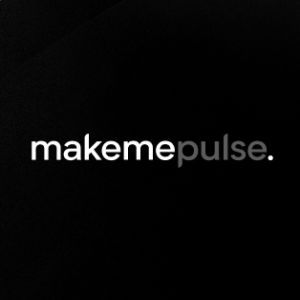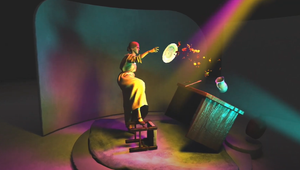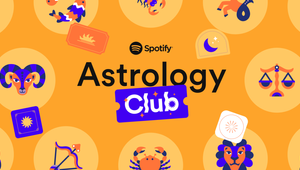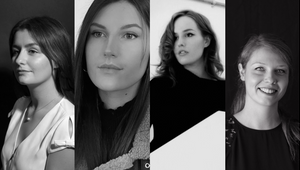
The Beauty Industry’s Transformation to Beauty-Tech

Covid-19 has changed lots of things we took for granted. Hugging. Taking a sip of our friend’s cocktail. Visiting a makeup counter and trying on foundation from a tester pot – now that feels like something from a prehistoric era. According to recent research by McKinsey, prestige cosmetic and fragrance brands saw a massive decline in purchasing in 2020, ranging from 55% to 75%. The Covid-19 pandemic exposed a huge weakness in the (pre-pandemic) $532bn beauty industry: its absolute reliance on human interaction and in-store purchasing. In addition to shop closures and a work-from-home lifestyle, applying a full face of makeup – let alone buying new products – felt redundant when half your visage was covered by a mask. However, the crisis also kickstarted a new era of digital transformation, enabling the beauty industry to embrace the change and become the beauty-tech industry.
Central to this transformation is the use of AI (artificial intelligence) and AR (augmented reality) powered beauty solutions, which are set to revolutionise the way we buy cosmetics. Although many of these innovations predated the pandemic, the coronavirus crisis has accelerated consumer uptake of virtual try-on technology. In fact, a Digital Consumer Survey by Euromonitor revealed around 20.1% of consumers had used AR or VR on their mobile or laptop to test out makeup in 2020 – and it’s a trend that looks set to grow even once bricks-and-mortar stores reopen, with continued concerns around safety and hygiene for in-person product testing and consultations.
As a cutting-edge, cost efficient and safer experience, try-on tech represents the future of the beauty industry. In combination with the power of data, brands can offer customers highly personalised personalised solutions with scope to extend beyond cosmetics to hair accessories or even luxury jewellery, catering to overseas consumers who aren’t able or willing to travel and shop in-person. So how might the technology evolve – and what is the role of brands and agencies in this new, highly technical industry?
L'Oréal, which acquired augmented reality pioneer ModiFace in 2019 is already reaping the rewards of being an early adopter. The beauty conglomerate has rolled out virtual try-on across its own stable of brands including Lancôme and YSL. Other giants, such as Estée Lauder-owned Mac and Benefit, have partnered with Perfect Corp, the company behind the popular YouCam Makeup tool, to provide the AR try-on function on their ecommerce sites and social platforms.
Though the technology is still in its infancy – particularly on websites, compared to apps or social platforms – it’s set to evolve into a much more realistic experience as brands invest heavily in research and development. From a commercial perspective, AR is a proven sales drive: a 2021 report by Snap and Deloitte found that interacting with products that have AR experiences leads to a 94% higher conversion rate. With additional benefits ranging from increased accessibility to cost savings on expensive in-store tester products, investing in this new tech feels increasingly like a necessity, not a ‘nice-to-have’, for brands.
Data can be collected to create new products and better define the customers in real time: if a brand already knows the client’s skin issues, for example, and what solutions they are looking for, it can tailor suggestions accordingly. This goes hand in hand with upselling and cross-selling: if I already have a lipstick, the AR try-on tool can find and suggest a more premium alternative, or a complementary eyeshadow, base or bronzer. Plus, the technology can be seamlessly linked to social media, allowing customers to unlock discounts and other offers.
The benefits for the customer are equally numerous, starting with speed and comfort. Why trek to your nearest department store to try out a new lipstick when you can do it from the comfort of your own home? Customisation is also a big draw, allowing people to create their own make-up shades and colours for a perfectly personalised look.
It’s not only make-up that’s being revolutionised, but skincare in general. The global men’s skincare market is already projected to reach $18.92 billion by 2027, and the rise of virtual consultations may encourage men who have traditionally been less comfortable with IRL settings to engage with skincare products. Perfect Corp’s AI diagnostics tool can already detect over a dozen skin concerns, and in time, the technology could be used to treat dermatological issues such as acne or scarring, and even diagnose more serious medical conditions, such as common skin cancers.
Is this the end of traditional in-store buying for beauty brands? As previously mentioned, the technology is still evolving, but over the coming years it’s likely to become quicker and easier, and with each generation the idea of virtual try-on will become more normalised. Ultimately, we will probably see a hybrid model emerge, which blends try-on tech in a real-life setting. A case in point is Amazon’s new London hair salon, where customers can use AR to experiment with different hair colours and test other new technologies.
So, how can agencies and production companies add value in a world that is predominantly driven by sales, rather than a creative experience? Firstly, this is a highly technical arena, so agencies and production companies with expertise are well-placed to offer brands guidance in choosing the right AR or AI technology product for their offering. They can also help brands with using AR in marketing strategies: to acquire new customers, say, or using AR to educate existing clients about virtual beauty tools. Ultimately, though, however innovative these tools become, technology alone won’t help a brand stand out in a crowded market. Leveraging a brand’s social platforms or creating an innovative digital campaign around a new product launch are still critical for cutting through the noise.
With research by Snap and Deloitte predicting that nearly 75% of the global population and almost all smartphone users will be frequent AR users by 2025, the next few years undoubtedly represent an exciting opportunity for beauty brands and their creative partners. The beauty industry is dead: long live the beauty tech industry!










